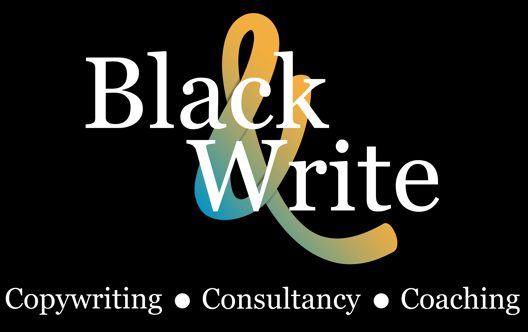Tone of voice is a very simple concept: it’s not what you say, it’s how you say it. It’s relevant to both verbal and written communications, although in a business / marketing context, the verbal side sometimes tends to get forgotten (which it shouldn’t!). Tone of voice is a BIG part of what makes your business unique and stand out from the crowd.
Think about some of the people you know and the different ways they talk to you. Some might be quite formal and serious, while others could be cracking a joke at every opportunity. The same applies to how people write, with tones and styles varying from the academic to the technical, the short and punchy to the wildly verbose. The image below shows just some of the tones of voice you can choose from. T

Why tone of voice matters
As a business, your tone of voice is a key part of your overall brand. It defines how you want to talk and write to your target audience, but even more importantly, it needs to reflect how they want to be talked and written to. If there’s a disconnect between the two, you’re in trouble. That’s why it’s important to understand your target audience before you even think about starting to define your tone of voice (or any other aspect of your branding).
Let’s take an example from some of the tone of voice slides I use in training sessions. A company called XYZ Web Design wants to define a tone of voice for its business, but hasn’t a clue where to start. Three team members get together and each comes up with a single sentence that sets out what XYZ does in a nutshell. Here are the results:

As you can see, each sentence has a completely different tone of voice. The one on the left is serious and formal, using the third person to name the company instead of just saying ‘we,’ and referring to ‘its clients’ rather than ‘our clients’ or addressing the reader directly.
The middle one is just that: middle of the road. Still professional, but with a friendly touch thanks to the use of the first (‘our’) and second (‘your’) persons. The right hand sentence goes a bit further, using slang (‘super-duper’) and an exclamation mark, probably in an effort to make the company sound young and fun to work with.
So, which sentence is the right one for XYZ Web Design? The truth is, it’s impossible to tell without defining the company’s target audience. The team members have made a mistake here and put the cart before the horse. They’ve started work on their tone of voice before deciding who it is they want to speak and write to.
Matching tone of voice to target audience
Once you’ve defined your target audience, the right tone of voice should become clear and you can start work on the finer details. Let’s rewind a bit and reimagine the XYZ scenario. They’ve done some market research and found there’s a gap in the market for a young, and innovative web design company that doesn’t use templates and produces high quality, bespoke designs at competitive prices. This fits with their own ethos of offering value for money and a flexible service that’s tailored to each client’s needs.
As a result of this research, they define their primary target audience as small business owners or sole traders who are digital natives (Gen Zs and Centennials). This audience understands how the online world works, but doesn’t have the time or inclination to create and manage a website. They spend a lot of time on social media and Netflix, and relatively little time consuming traditional media such as newspapers and mainstream TV.
With this in mind, it’s likely that either the middle or right hand examples above would be the best tone of voice for XYZ Web Design, as they’re more suited to a younger, more informal audience. (When discussing these examples in training sessions, most people tend to prefer the middle one as it’s friendly and professional without being corporate and stuffy, or over-familiar and a bit cheesy.)
Either would work well with the online media, such as Instagram, TikTok and YouTube, where their target audience spends most of their time.
It’s not just about the words…
The next steps for XYZ Web Design would be to make sure their chosen tone of voice reflects their wider branding. The overall look and feel of their fonts, colours, logo and imagery needs to work in harmony with the words they use to create a cohesive brand that works both visually and in writing. If this combination doesn’t work, it’s back to the drawing board – which is why tone of voice should always be considered at the same time as visual elements, as part of the overall branding process.
To give an example, let’s take a plumbing and heating company that prides itself on its caring approach to customers, prioritising call outs to the elderly and vulnerable and offering a range of maintenance plans to help people stay warm and safe. Their tone of voice would reflect this, being friendly and conversational without being patronising.
But if their corporate colours were a harsh bright red and black, with lots of jagged edges and ‘hard’ looking serif fonts such as Times New Roman, there’d be a mismatch here. How much better would it be to use ‘warm’ colours such as orange and light blue, with ‘gentle’ imagery and an attractive font like Calibri or Arial? A bit like the mood board below.

More to it than meets the eye (literally!)
As you can see, there’s more to tone of voice than simply choosing a few words and sentences to describe your business. It’s a thread that runs through every aspect of your branding, marketing and communications activities – from your 60 second elevator pitch to your sales presentations, GoogleAds, landing pages, Facebook posts and press releases.
Need help with your tone of voice?
With tone of voice being one of my specialisms, I can help if you’re not sure where to start. I’ll work with you to define and create your very own, unique tone of voice that reflects your company’s mission and values, and clearly shows what you stand for. Working with trusted partners, I can even provide a complete end-to-end branding or rebranding service, including visual brand and tone of voice guidelines to help you stay on track.
Let’s get going!
Get in touch today to book a free, no obligation chat about your tone of voice and branding requirements. We’ll discuss the best way I can help your business, whether that’s training or coaching you and your team, or providing a consultancy service to define the right tone of voice for you to take forward yourself.

